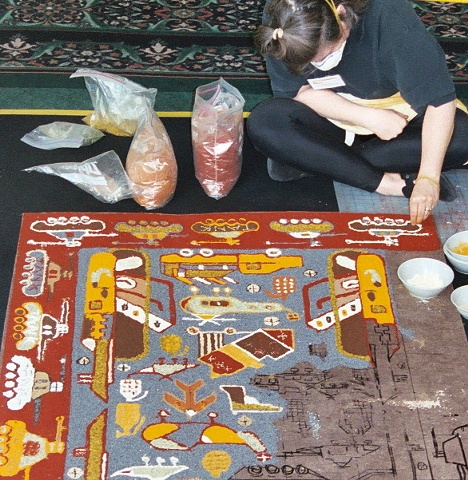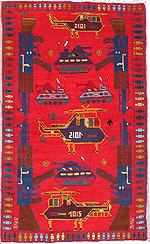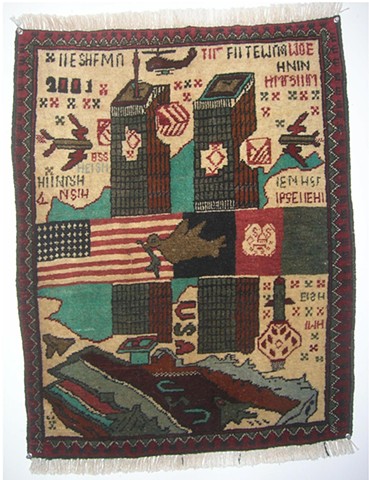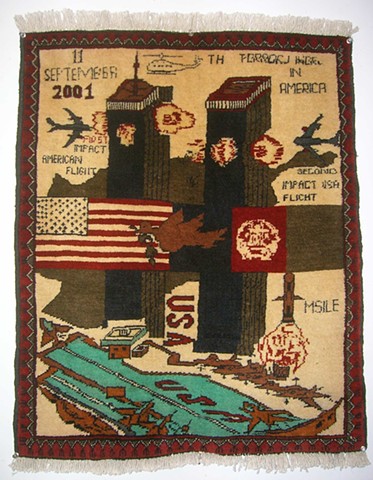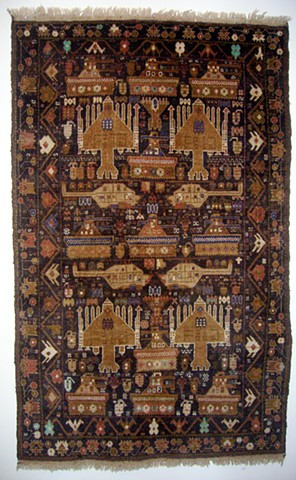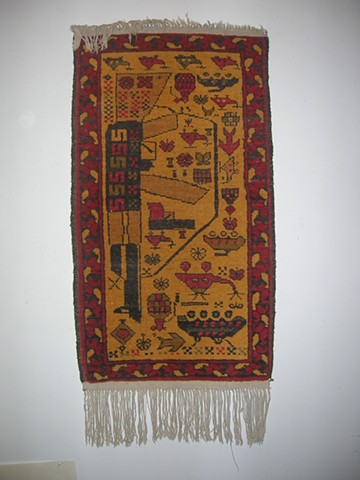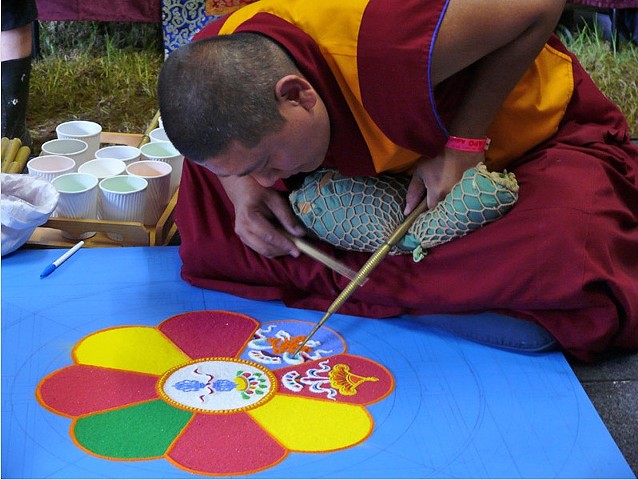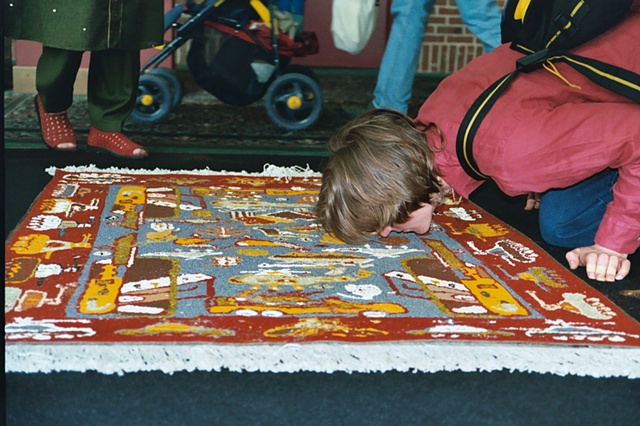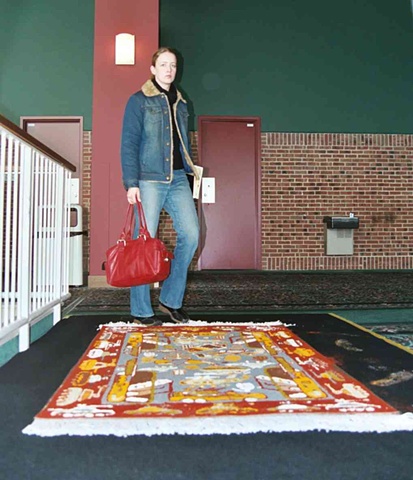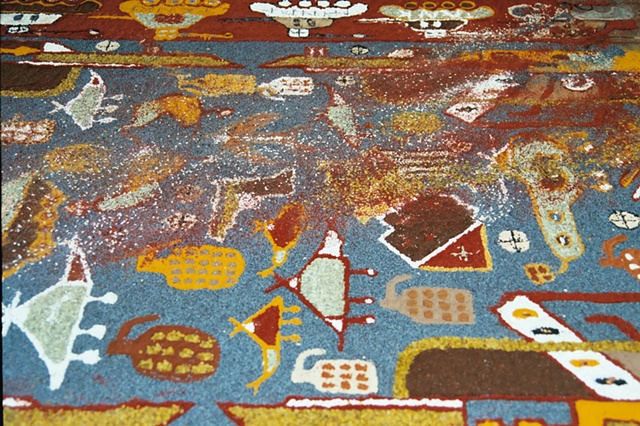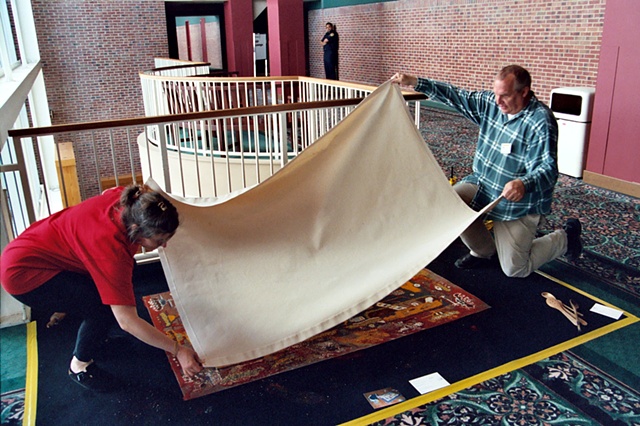Making a Spice War Rug
Making a Spice War Rug Installation
In 2001, when the US invaded Afghanistan, I began making art installations that drew upon Tibetan Sand Mandalas and the War Rugs woven by Afghani women. Instead of sand, I use spices.
Afghan War Rugs are textiles that were woven in response to the Soviet invasion of Afghanistan in 1979. Tribal weavers, usually women, began incorporating images of weapons -- grenades, rifles, tanks -- into their traditional carpet patterns.
Subtle at first, the military iconography eventually dominated the textiles, erasing all but the most incidental remnants of centuries of previous motifs. AK-47s line form a framework for tanks, armored personnel carriers, mines, jets, grenades, handguns and bullets. The practice continues to this day, most commonly with carpets that commemorate the 9/11 terrorist attack on the World Trade Center and subsequent US invasion of Afghanistan in 2003.
In 2003, adopting the practice of the Tibetan Buddhist monks who make elaborate sand mandalas as prayers or meditations, I began to reconstruct Afghan War Rugs like mandalas, using spices instead of sand. A meditation, they take up to a week for me to complete. With fringe and popper firecrackers attached, the rugs exist only temporarily. They are touched, inhaled, even walked on. Then, like the Buddhist mandalas, they are destroyed.
At first, I swept up the spices into jars at the end of each exhibition. Now the pieces are preserved as “monoprints,” with the remaining spices fixed to cloth with a clear medium. The prints retain much of the color and aroma of the rugs, as well as the pattern of footprints and other incidents that the installation endured.
